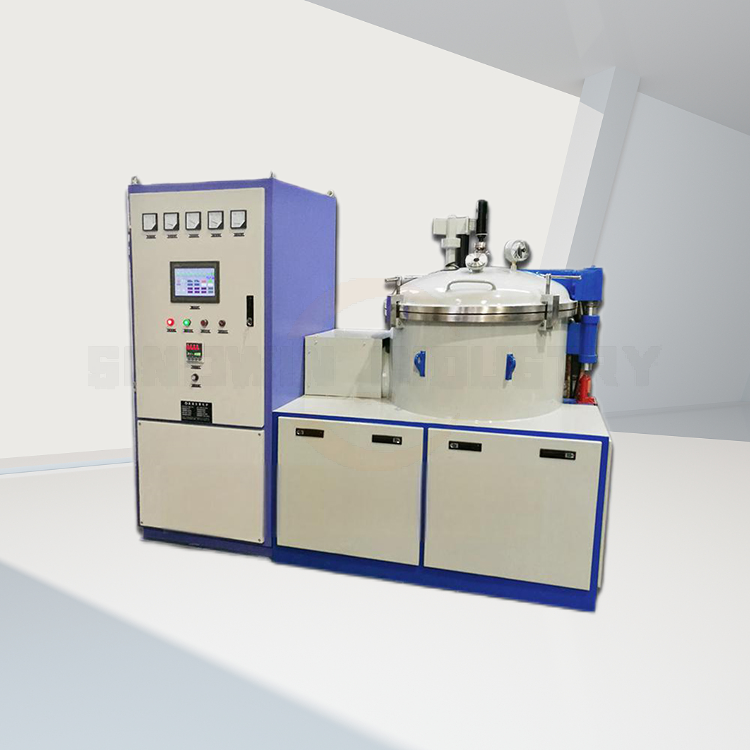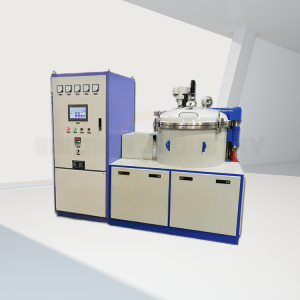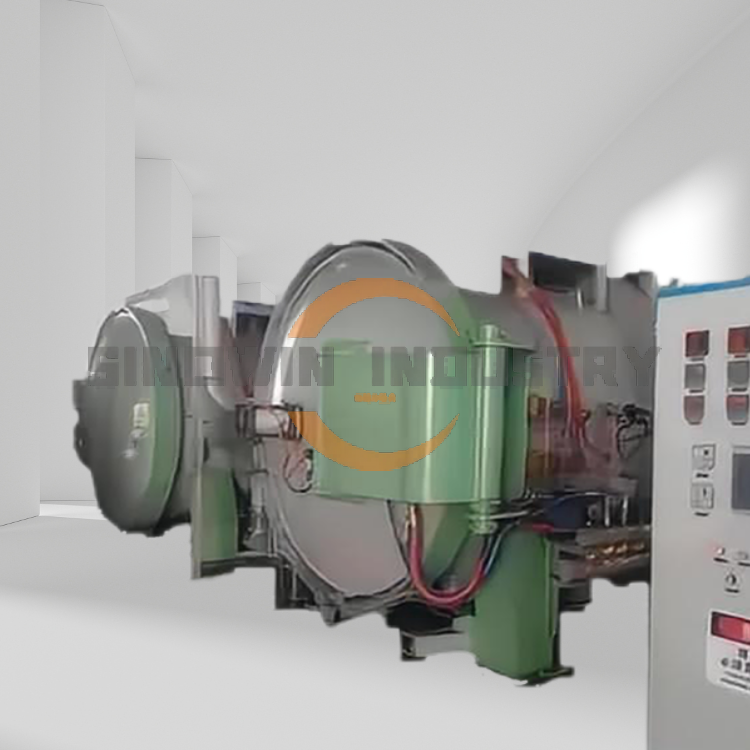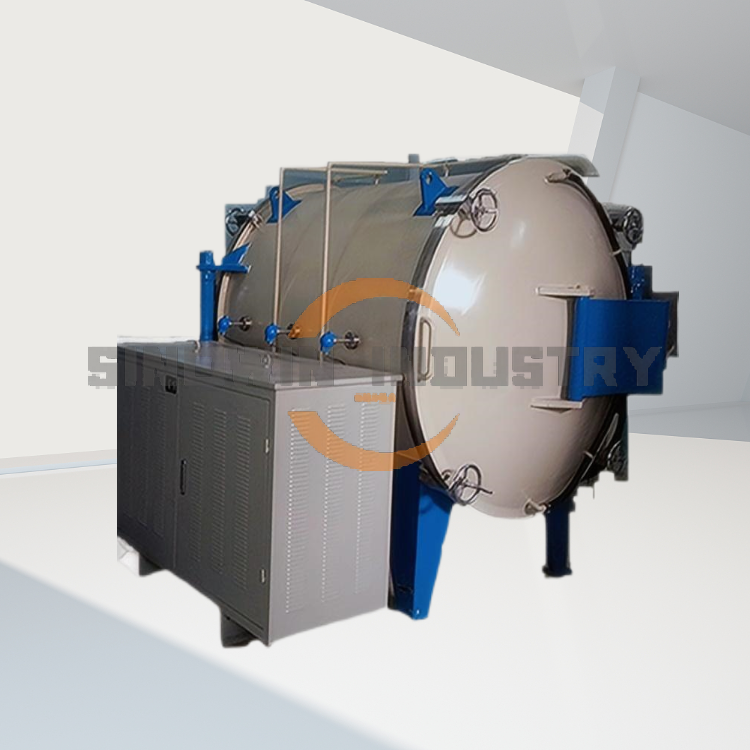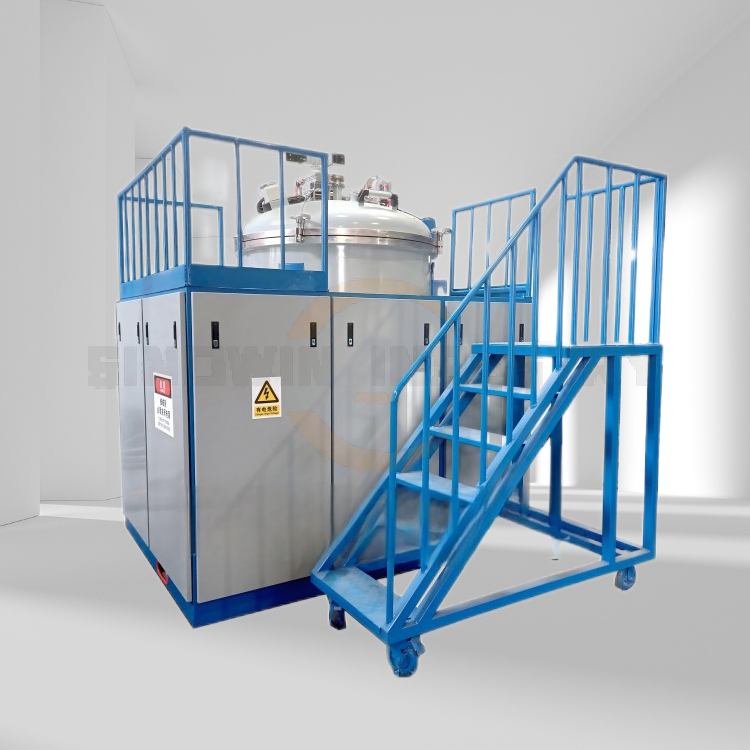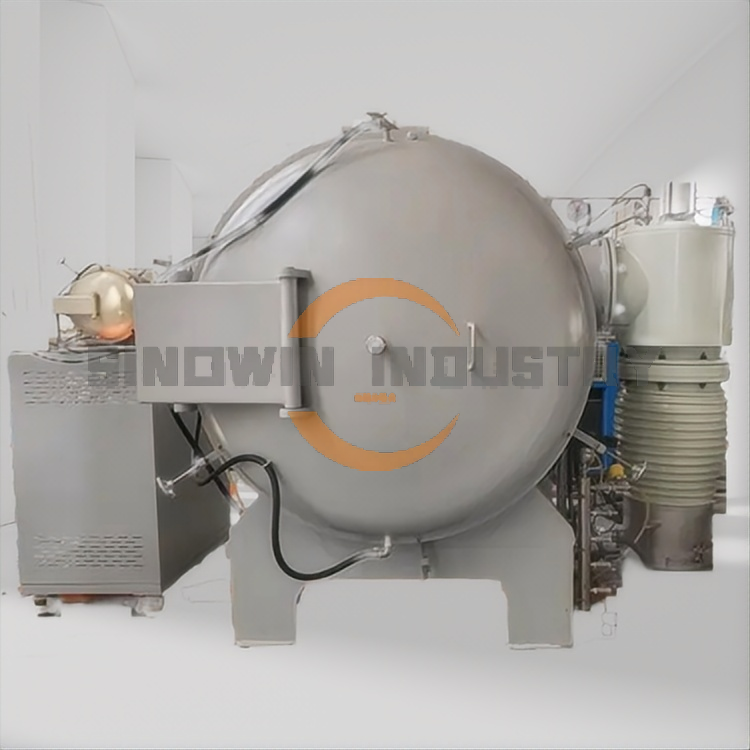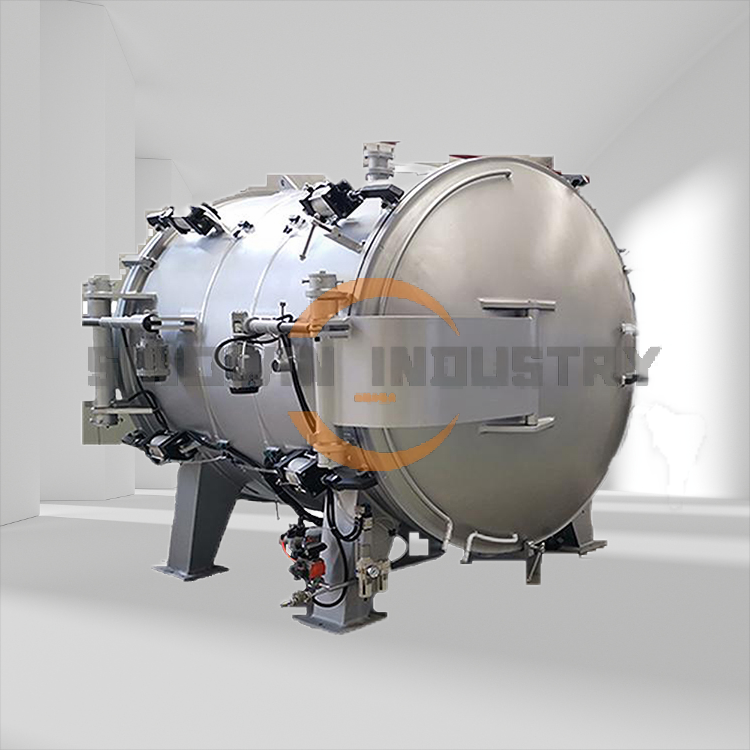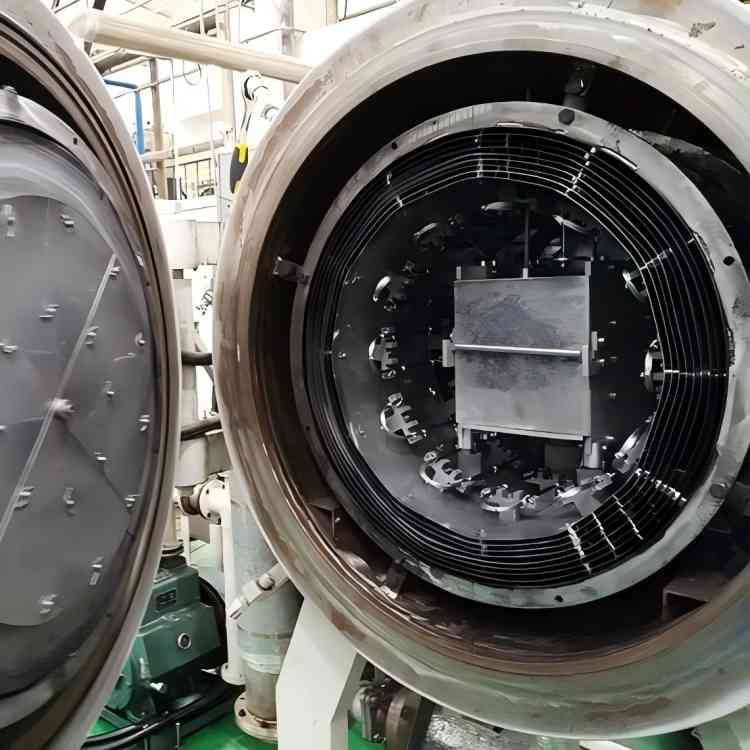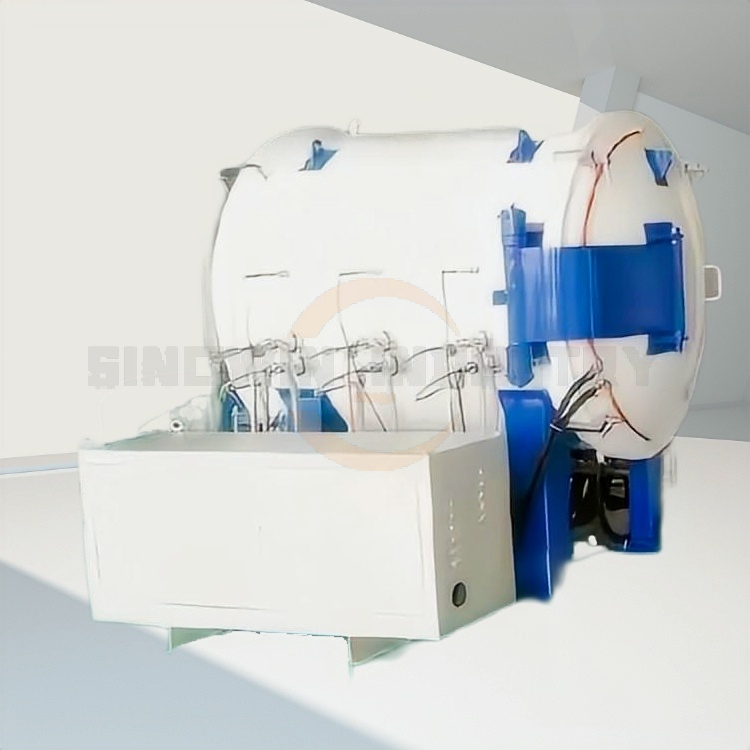Product Description:
The IGBT Experimental Graphitization Furnace For Lab application is a specialized laboratory device designed for institutions such as universities and research institutes. This furnace is dedicated to advanced applications in the sintering and graphitization of carbon-based materials, including carbon fiber ropes and filaments, as well as other materials that can be sintered in a carbon environment.
Applications:
This versatile furnace is ideal for projects involving:
- Sintering and graphitization of carbon materials
- Sintering of carbon fiber ropes
- Sintering and graphitization of carbon fiber filaments
- Various other materials suitable for sintering in a carbon atmosphere
Features:
- Compact footprint, low noise, and minimal energy consumption
- Capable of achieving ultra-high temperatures up to 3000°C, meeting the diverse requirements for sintering and graphitization
- Utilizes advanced IGBT series induction heating technology, resulting in low harmonic distortion and minimal interference with electronic equipment
- Energy-efficient, saving up to 15% more electricity compared to traditional SCR medium frequency power supplies
- Equipped with a programmable controller and user interface for fully automated operations, offering three working modes: fully automatic, semi-automatic, and manual
- High safety standards with a comprehensive PLC (Programmable Logic Controller) system for automated control and protection, including alarms for over-temperature, sensor failure, water pressure, flow rate, furnace overpressure, and excessive water temperature
Technical Parameters and Specifications:
- Maximum Operating Temperature: 3100°C
- High-Temperature Zone Volume: Φ100-300mm x 100-300mm (custom sizes available per user requests)
- Furnace Atmosphere: Vacuum, hydrogen, nitrogen, argon
- Temperature Uniformity: ≤±10°C
- Temperature Measurement: Infrared optical pyrometer (1000-3200°C), optional low-temperature infrared pyrometer (300-1100°C)
- Temperature Measurement Accuracy:2-0.75%
- Temperature Control: Programmed and manual control; control accuracy: ±1°C
- Maximum Heating Rate: 100°C/min (for empty furnace; depends on the high-temperature zone volume and furnace structure)
- Comprehensive PLC System: Water, electricity, and gas automated control and protection systems. Control cabinet can connect with furnace up to 20 meters for remote operation.
| Volume(L) | 1.1 | 10 | 28 |
| Optimal Performance temperature(℃) | 2800 | 2800 | 2800 |
| Ultra Temperature(℃) | 3100 | 3100 | 3100 |
| Work Size(mm) | Φ100X150 | Φ200X300 | Φ300X500 |
| Power(KW) | 30 | 50 | 80 |
| Igbt power(HZ) | 4000 | 2500 | 2500 |
| Heating Method | IGBT HEATING | ||
| Atmosphere | High Vacuum(optional)/ Vacuum /H2,N2,Ar or other inert gases | ||
Configuration Options:
- Horizontal double-door or vertical top-opening design
- Vacuum pump options: rotary vane pump or rotary vane pump coupled with a Roots blower and digital vacuum gauge
- Temperature measurement systems: dual-color infrared pyrometer (1000-3200°C) / tungsten-rhenium thermocouple (0-1700°C) + dual-color infrared pyrometer (1000-3200°C) / monochrome infrared pyrometer (300-1100°C) + dual-color infrared pyrometer (1000-3200°C).
The IGBT Experimental Graphitization Furnace For Lab application boasts high heating efficiency and user-friendly operation, suitable for experimental research, scientific studies, and teaching demonstrations.Whether you are in research, analysis, or manufacturing, the IGBT Laboratory Graphitization Furnace supplied from SINOWIN INDUSTRY is one guaranteed option for your heating treatment industry.
Donot hesitate to Contact us at once for quotation of Sinowin Industry’s industrial&lab furnaces , and we are not only a supplier but a reliable partner to assist you the safe solutions of the heat treatment .
Product Q&As for the IGBT Experimental Graphitization Furnace For Lab application,
Q1: What is an IGBT Experimental Graphitization Furnace For Lab application, and how does it work?
A1: The IGBT Experimental Graphitization Furnace For Lab application is a furnace designed for the thermal treatment of carbon-based materials to convert them into graphite. It operates using Insulated Gate Bipolar Transistor (IGBT) technology, which allows for precise control of temperature and energy efficiency. The furnace heats the materials in a controlled environment, ensuring uniform heating and minimal energy loss, thus providing high-quality graphite production.
Q2: What are the benefits of using IGBT technology in graphitization furnaces?
A2: The use of IGBT technology in graphitization furnaces offers several advantages, including enhanced energy efficiency, reduced heating times, and improved temperature control. IGBT technology allows for quick and precise adjustments to the heating elements, resulting in lower operational costs and higher yield of graphite. Additionally, it minimizes emissions and enhances the overall operational safety of the furnace.
Q3: How can I optimize the performance of my IGBT graphitization furnace?
A3: To optimize the performance of your IGBT graphitization furnace, consider the following practices: ensure regular maintenance and calibration of the heating system, monitor and control the heating rates for different materials, and use high-quality input materials. It’s also beneficial to conduct periodic performance assessments to identify areas for improvement and adjust operational parameters as needed for optimal output.
Q4: What safety measures should be taken when operating the IGBT experimental furnace?
A4: When operating the IGBT experimental furnace, it is crucial to follow specific safety measures. Always wear appropriate protective gear, such as gloves and goggles, to safeguard against high temperatures and potential hazards. Ensure that the furnace is installed in a well-ventilated area, and regularly inspect the equipment for any wear or malfunction. It is also advised to follow the manufacturer’s operational guidelines closely and have a fire suppression system in place.
Q5: What are the latest advancements in IGBT technology related to the graphitization process?
A5: Recent advancements in IGBT technology have focused on enhancing control precision and reducing energy consumption during the graphitization process. Innovations include the development of smarter control algorithms, improved thermal insulation materials, and the integration of IoT for real-time monitoring and diagnostics. These advances not only boost production efficiency but also contribute to sustainable practices in graphite manufacturing.
Q6: How does the IGBT graphitization furnace compare to traditional furnaces?
A6: The IGBT graphitization furnace presents several advantages over traditional furnaces, including higher energy efficiency, improved process control, and reduced operational costs. Unlike conventional furnaces that rely on resistive heating, IGBT technology allows for more rapid heating and cooling cycles, resulting in better quality graphite and reduced waste. Additionally, the IGBT furnace systems are generally more compact and easier to automate.
Q7: What materials are most suitable for graphitization in the IGBT furnace?
A7: The IGBT graphitization furnace is best suited for processing carbon-based materials, such as petroleum coke, coal tar pitch, and specific synthetic carbon precursors. These materials typically have high carbon content, which, when subjected to the appropriate temperature and conditions, can be effectively converted into high-purity graphite.
Q8: Can the IGBT Experimental Graphitization Furnace For Lab application be used for industrial applications?
A8: Yes, the IGBT Experimental Graphitization Furnace For Lab application is highly suitable for industrial applications, offering high efficiency and scalability for mass production of graphite. Industries such as battery manufacturing, electrode production, and advanced materials development can benefit significantly from the capabilities provided by IGBT technology, making it an essential tool for modern graphite production.
Q9: What are some recommended maintenance practices for the IGBT graphitization furnace?
A9: Recommended maintenance practices for the IGBT graphitization furnace include regular cleaning of heating elements to remove residue buildup, inspection of insulation materials for wear, and checking electrical connections for signs of degradation. It is also advisable to conduct periodic functionality checks of control systems and sensors, as well as to maintain an organized log of operational hours and maintenance activities for reference.
Q10: Where can I find reliable suppliers for the IGBT graphitization furnace?
A10: You can find reliable suppliers for the IGBT graphitization furnace through various industry trade shows, online marketplaces, and dedicated manufacturer websites that specialize in thermal processing equipment. Additionally, seeking recommendations from industry professionals or consulting with trade associations can lead you to reputable suppliers known for their quality products and excellent customer support.
- —
Technical Parameters and Specifications:
- Maximum Operating Temperature: 3100°C
- High-Temperature Zone Volume: Φ100-300mm x 100-300mm (custom sizes available per user requests)
- Furnace Atmosphere: Vacuum, hydrogen, nitrogen, argon
- Temperature Uniformity: ≤±10°C
- Temperature Measurement: Infrared optical pyrometer (1000-3200°C), optional low-temperature infrared pyrometer (300-1100°C)
- Temperature Measurement Accuracy:2-0.75%
- Temperature Control: Programmed and manual control; control accuracy: ±1°C
- Maximum Heating Rate: 100°C/min (for empty furnace; depends on the high-temperature zone volume and furnace structure)
- Comprehensive PLC System: Water, electricity, and gas automated control and protection systems. Control cabinet can connect with furnace up to 20 meters for remote operation.
| Volume(L) | 1.1 | 10 | 28 |
| Optimal Performance temperature(℃) | 2800 | 2800 | 2800 |
| Ultra Temperature(℃) | 3100 | 3100 | 3100 |
| Work Size(mm) | Φ100X150 | Φ200X300 | Φ300X500 |
| Power(KW) | 30 | 50 | 80 |
| Igbt power(HZ) | 4000 | 2500 | 2500 |
| Heating Method | IGBT HEATING | ||
| Atmosphere | High Vacuum(optional)/ Vacuum /H2,N2,Ar or other inert gases | ||
